Dream Frequency Design: Crafting Visuals that Feel like Half-Remembered Dreams
There’s this odd sensation that remains immediately after you wake up—a color haze, a face you can’t put a name to, light warping in directions the material world won’t. That odd, emotional haze is no longer limited to the subconscious. It’s bleeding into visual culture. Welcome to Dream Frequency Design—a growing movement where artists and brands create images that resemble pieces of half-remembered dreams.
This is the craft of nearlies. Nearly real, nearly clear, nearly comprehended. With blurred contours, dreamlike geometry, and fluid color, designers are mapping the territory in between reality and fantasy. And tools like Dreamina, an AI photo generator, are assisting artists to capture that in-between sensation—translating subconscious feelings into solid, visual verse.
In an over-obvious world, dreamlike distortion is invigorating. Its design doesn’t have to make sense—it only has to feel known, like déjà vu in visual guise.
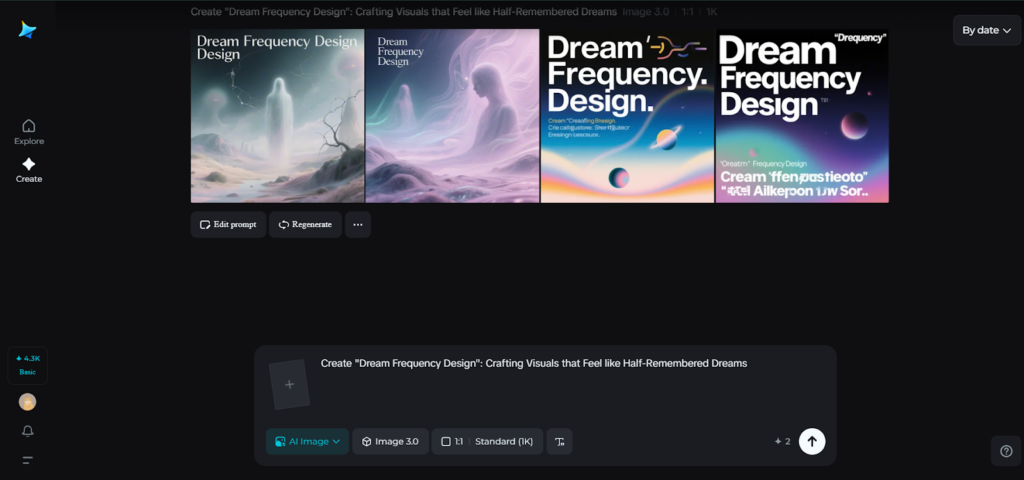
Where surreal collides with emotional truth
Dream frequency design isn’t about fantasy—it’s about memory. How nostalgia, fear, or awe surface as visual texture. The aesthetic tends to feature:
- Soft gradients and haze: replicating how the mind recalls light, not detail.
- Distortion or fluid motion: shapes that melt or change, suggesting emotional transformation or instability.
- Ambiguous narratives: images that suggest a story but won’t tell it.
These dreamlike signals are now being adopted by brands to create empathy and connection. Rather than yelling messages, they’re whispering pictures that occupy a space between emotion and clarity. It’s not selling something—it’s selling a sensation.
For example, a skincare campaign can utilize imagery like misty reflections to induce renewal and gentleness. A travel company can blur landscapes into fields of color that evoke freedom instead of geography. The surreal serves as the mirror of emotion.
Branding within the subconscious spectrum
In advertising, the dreamlike look does something that few other aesthetics manage—it engages imagination. When you leave room for filling, the viewer supplies it with their own narrative. And the act of personal engagement makes the picture stick.
Designers are now incorporating these methods throughout branding ecosystems:
- Web interfaces with soft glows and motion that simulates memory retrieval.
- Posters and images that fade at edges, directing the feeling over focus.
- Logos and patterns that unfold like repeated motifs in a dream sequence.
Dream frequency design shatters the linear reasoning of classic advertising—it’s less about clarity, more about feeling. Which is where the AI logo generator fits in, allowing brands to craft fluid, unfolding identities that change form but remain emotionally consistent.
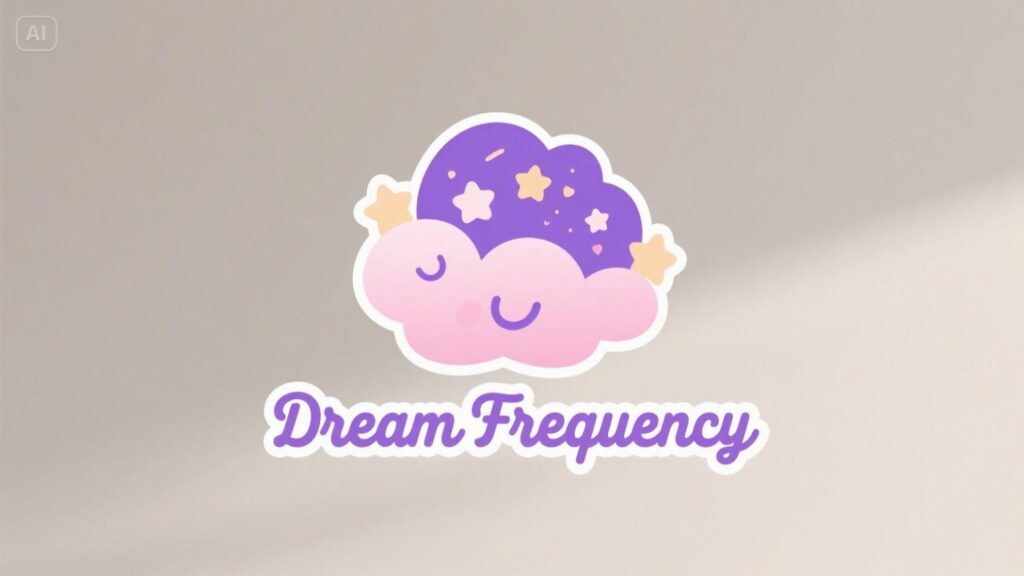
How to tap into the dream frequency with Dreamina
Step 1: Write a text description
Go to Dreamina and create a prompt which is descriptive of the mood of your dreamed dream, not its actual content. Consider how it feels to recall something nearly forgotten. Consider tone, texture, and surreal aspects that mix the familiar with the uncanny.
Sample prompt: Softly glowing bedroom melting into an ocean of light; pastel colors; hazy reflections on glass; flying flowers lit up by early morning dawn; cinematic and emotive composition that reminds one of a fading memory.
Dreamina renders these verse snippets into images that vibrate with subconscious overtones—ideal for dreamlike campaigns, album covers, or ambient branding.
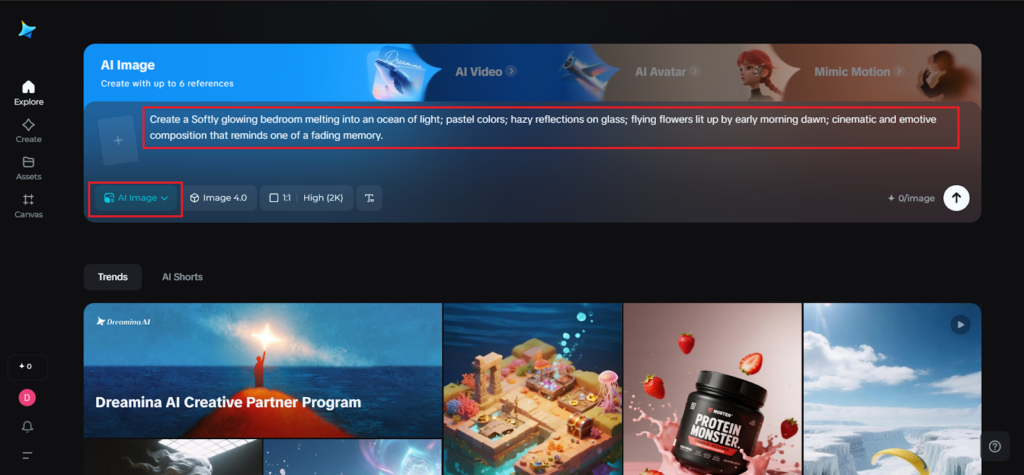
Step 2: Refine parameters and generate
Enhance your design by modifying Dreamina’s model, aspect ratio, size, and resolution. When dealing with images for print or immersive brand experiences, render at 1k for previews and 2k for your final renders to maintain the textural details of your image. When you hit on the settings that feel right, click the Dreamina icon to render your piece. Within moments, you will have visual evidence that dances on the line between clear and wondrous—a still image that seems alive.
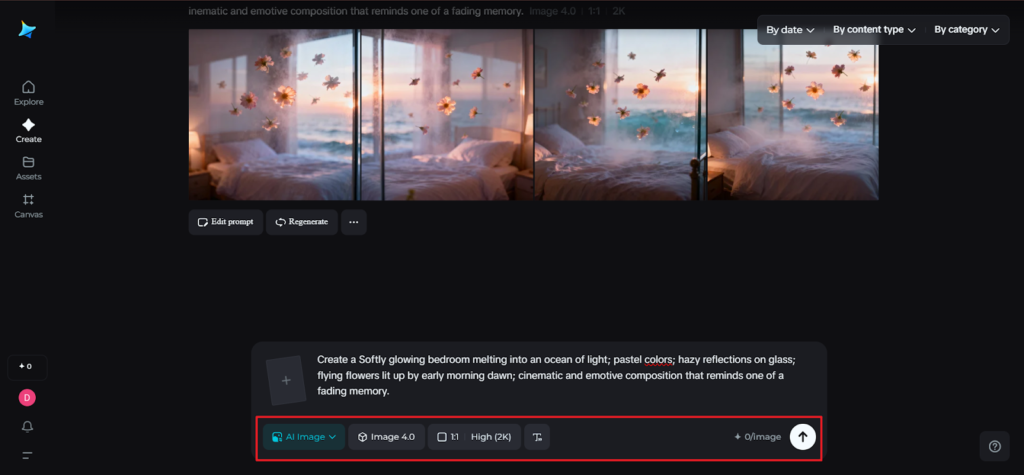
Step 3: Edit and save
As your dreamlike picture comes into being, apply Dreamina’s tools to refine its emotional quality. The inpaint tool can blur or merge details into abstraction, but expand pushes your composition outside visible limits, replicating the endless horizon of dreams. Apply remove to remove abrupt realism and retouch to introduce soft motion or light diffusion. Once your surrealist masterpiece is complete, press the Download icon to save it—a dream locked in pixels.
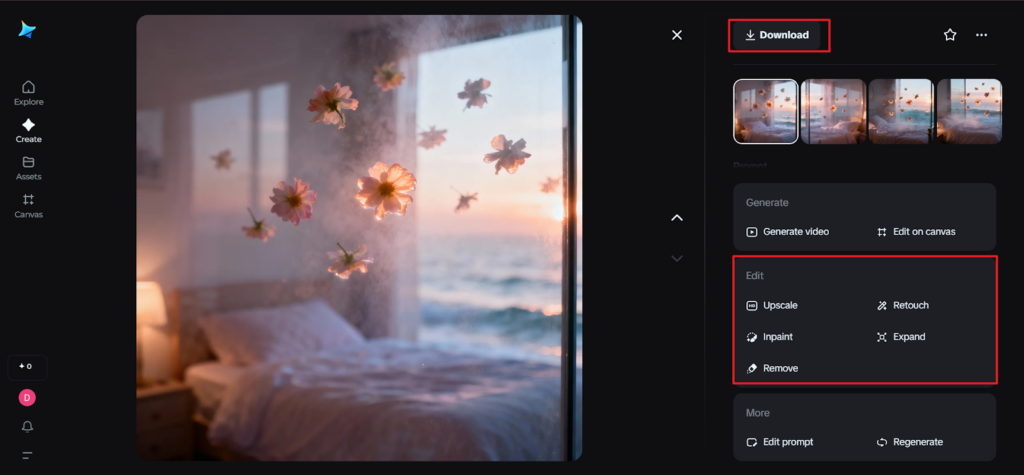
Designing for memory, not message
Perhaps the most fascinating thing about dream frequency design is its intolerance of perfection. It recognizes that beauty tends to be found in imperfection. In brand design, this philosophy is applied as storytelling that is emotional and not directive.
A poster with gentle distortion or drifting type doesn’t make you think—it encourages you to feel something vague. That emotional uncertainty provides contemporary campaigns with a cinematic, near-sacred feel—work that exhales instead of pushes.
Here’s why it matters for visual communication:
- Emotional richness fosters durability. Humans recall how something affected them longer than what it communicated.
- Unconscious aesthetics matter. In a culture of piercing distinctness, softness tastes rare.
- Layering of senses calls for investigation. When images resonate with dreams, they enter the cycle of re-viewing—humans come back to view once more.
Dreamina provides this emotional accuracy, enabling brands to create images that throb with the subtle beat of the unconscious.
When brands know how to float
Increasingly, contemporary brands are abandoning fixed identities and embracing emotional agility. Visual identity is like music—sometimes staccato and rhythmic, sometimes drawn-out and ethereal. Frequency design of dreams allows brands to write that softer, ambient track of their narrative.
The AI poster generator is an instrument for generating atmospheric visualizations—posters that resemble dusty memories or half-slept landscapes. Conceive a campaign that shifts color from dawn to dusk, or one that layers mist and reflections to create a sense of waking nostalgia. Every poster is a distinct verse in the same visual song.
Dreamina technology enables this type of play, providing designers with space to innovate without losing integrity.
The art of not remembering fully
The power of dreamlike imagery lies in the same thing that makes dreams hard to catch—they’re ephemeral, emotional, ungraspable. But also, that elusiveness is what gives them power. It allows brands to transcend literal storytelling into the place of pure resonance.
When a campaign feels like it’s part of your own memory, it ceases to be marketing—it becomes emotionally native.
Conclusion
Dreamina makes this new genre possible. Its AI photo generator, AI logo generator, and AI poster generator constitute a triad of creative tools for designers who seek to work in the language of the subconscious.
Dream frequency design isn’t clarity—it’s connection. It’s the craft of turning what we sense but can’t define, forming the images we nearly recall, and designing the feelings that stay long after we wake up.
Because sometimes the most excellent designs aren’t the visible ones—they’re the ones that quietly haunt us, like dreams that won’t go away.







